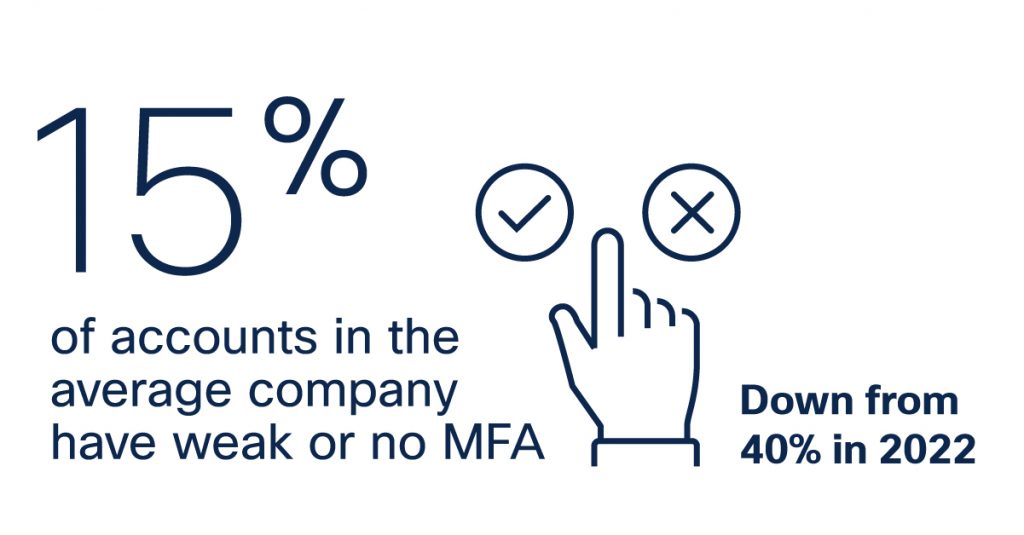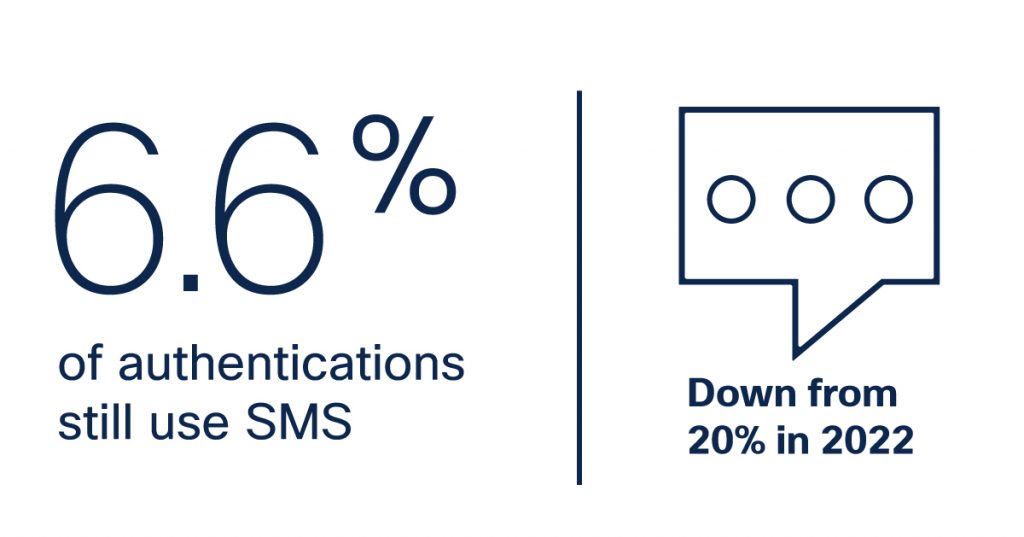Let’s say that, in the course of the center of a busy day, you obtain what appears like a work-related e-mail with a QR code. The e-mail claims to come back from a coworker, requesting your assist in reviewing a doc. You scan the QR code together with your cellphone and it takes you to what appears like a Microsoft 365 sign-in web page. You enter your credentials; nevertheless, nothing appears to load.
Not pondering a lot of it, and being a busy day, you proceed to go about your work. A pair minutes later a notification buzzes your cellphone. Not choosing it up instantly, one other notification comes. Then one other, and one other after that.
Questioning what’s happening, you seize the cellphone to discover a collection of multi-factor authentication (MFA) notifications. You had simply tried to log into Microsoft 365, perhaps there was a delay in receiving the MFA notification? You approve one and return to the Microsoft 365 web page. The web page nonetheless hasn’t loaded, so that you get again to work and resolve to examine it later.
That is similar to an assault that Cisco Talos Intelligence discusses of their newest Talos Incident Response (IR) Quarterly Report. On this case the Microsoft 365 sign-in web page was pretend, arrange by menace actors. These attackers used compromised credentials to repeatedly try to check in to the corporate’s actual Microsoft 365 web page, triggering the collection of MFA notifications—an assault method referred to as MFA exhaustion. In the long run, some workers who had been focused accredited the MFA requests and the attackers gained entry to those accounts.
Greater than the annoyance of fixing your password
Whereas the usage of QR codes is a comparatively latest growth in phishing, assaults just like the one described by Talos have been round for years. Most phishing assaults make use of related social engineering methods to trick customers into turning over their credentials. Phishing is incessantly one of many high technique of gaining preliminary entry within the Talos Incident Response Quarterly Report.
Attackers hammering MFA-protected accounts can be a regarding growth within the identification menace panorama. However sadly, most profitable credential compromise assaults happen with accounts that don’t have MFA enabled.
In line with this quarter’s Talos IR report, utilizing compromised credentials on legitimate accounts was one in every of two high preliminary entry vectors. This aligns with findings from Verizon’s 2023 Information Breach Investigations Report, the place the usage of compromised credentials was the highest first-stage assault (preliminary entry) in 44.7% of breaches.
The silver lining is that this seems to be bettering. Early final yr, in analysis printed by Oort1, now part of Cisco, discovered that 40% of accounts within the common firm had weak or no MFA within the second half of 2022. up to date telemetry from February 2024, this quantity has dropped considerably to fifteen%. The change has loads to do with wider understanding of identification safety, but in addition a rise in consciousness because of an uptick in assaults which have focused accounts counting on base credentials alone for defense.

How credentials are compromised
Phishing, whereas some of the well-liked strategies, isn’t the one means that attackers collect compromised credentials. Attackers usually try to brute drive or password spraying assaults, deploying keyloggers, or dumping credentials.
These are just some of the methods that menace actors use to collect credentials. For a extra elaborate clarification, Talos lately printed a superb breakdown of how credentials are stolen and utilized by menace actors that’s value having a look at.
Not all credentials are created equal
Why may an attacker, who has already gained entry to a pc, try to achieve new credentials? Merely put, not all credentials are created equal.
Whereas an attacker can acquire a foothold in a community utilizing an peculiar consumer account, it’s unlikely they’ll be capable of additional their assaults on account of restricted permissions. It’s like having a key that unlocks one door, the place what you’re actually after is the skeleton key that unlocks all of the doorways.
That skeleton key can be a high-level entry account akin to an administrator or system consumer. Concentrating on directors is sensible as a result of their elevated privileges enable an attacker extra management of a system. And goal them they do. In line with Cisco’s telemetry, administrator accounts see thrice as many failed logins as an everyday consumer account.
One other useful resource menace actors goal is credentials for accounts which are now not in use. These dormant accounts are usually legacy accounts for older methods, accounts for former customers that haven’t been cleared from the listing, or momentary accounts which are now not wanted. Generally the accounts can embrace greater than one of many above choices, and even embrace administrative privileges.

Dormant accounts are an often-overlooked safety difficulty. In line with Cisco’s telemetry, 39% of the full identities throughout the common group have had no exercise throughout the final 30 days. This can be a 60% enhance from 2022.
Visitor accounts are an account kind that repeatedly will get missed. Whereas a handy possibility for momentary, restricted entry, these usually password-free accounts are incessantly left enabled lengthy after they’re wanted.
And their use is growing. In February 2024, virtually 11% of identities examined are visitor accounts— representing a 233% soar from the three% reported in 2022. Whereas we will solely speculate, it’s doable that cloud-adoption and distant work contributed to this rise, as enterprises used momentary accounts to stage new companies and purposes or allow distant workloads within the short-term. Using momentary accounts is comprehensible, but when they’re forgotten or ignored, these shortcuts signify a severe threat.

Lowering the impression of compromised credentials
It goes with out saying that defending credentials from being compromised and abused is necessary. Nevertheless, eradicating this menace is difficult.
The most effective methods to defend in opposition to these assaults is through the use of MFA. Merely confirming {that a} consumer is who they are saying they’re—by checking on one other machine or communication type—can go a great distance in the direction of stopping compromised credentials from getting used.
Duo MFA, now accessible as a part of Cisco Consumer Safety Suite, offers strong safety that’s versatile for customers, however inflexible in opposition to the usage of compromised credentials. The interface offers a easy and quick, non-disruptive authentication expertise, serving to customers focus their time on what issues most.
MFA will not be a silver bullet
Little doubt, deploying MFA may also help in stop compromised credential abuse. Nevertheless, it isn’t a silver bullet. There are a couple of ways in which menace actors can sidestep MFA.
Some MFA kinds, akin to people who use SMS, might be manipulated by menace actors. In these instances—incessantly known as Adversary within the Center (AitM) assaults—the attacker intercepts the MFA SMS, both by way of social engineering or by compromising the cellular machine. The attacker can then enter the MFA SMS when prompted and acquire entry to the focused account.
The excellent news right here is that there was a drop in the usage of SMS as a second issue. In 2022, 20% of logins leveraged SMS-based authentication. As of February 2024, this quantity has declined 66%, to simply 6.6% of authentications. That could be a large change, and a constructive one at that. Along with AitM assaults, SIM swapping assaults have all however rendered SMS-based authentication checks ineffective.

That is backed up by analysis coming from the 2024 Duo Trusted Entry Report, the place utilizing SMS texts and cellphone calls as a second issue has dropped to 4.9% of authentications, in comparison with 22% in 2022.
Going passwordless
Should you actually need to scale back your reliance on passwords when confirming credentials, an alternative choice is Duo’s passwordless authentication. Passwordless authentication is a gaggle of identification verification strategies that don’t depend on passwords in any respect. Biometrics, safety keys, and passcodes from authenticator apps can all be used for passwordless authentication.
Based mostly on the numbers, passwordless is the brand new development. In 2022, phishing resistant authentication strategies akin to passwordless accounted for lower than 2% of logins. Nevertheless, in 2024, Cisco’s telemetry exhibits this quantity is climbing, at present representing 20%, or almost a 10x enhance. That is nice information, however nonetheless highlights a important level—80% are nonetheless not utilizing robust MFA.

Defending MFA from menace actors
Recall the MFA exhaustion assault Talos described of their newest IR report.
Talos’ instance does spotlight how there are choose circumstances the place attackers can nonetheless get previous MFA. A distracted or pissed off consumer might merely settle for a notification simply to silence the applying. On this case, consumer training can go a great distance in the direction of stopping these assaults from succeeding, however there’s extra that may be completed.
Cisco has lately launched the first-of-its-kind Cisco Identification Intelligence to assist shield in opposition to identity-based assaults like these. This groundbreaking know-how can detect uncommon identification patterns, primarily based on conduct, when mixed with Duo.
As an example, let’s take a look at when the menace actor begins hammering the login with the compromised credentials. Identification Intelligence can acknowledge anomalies akin to MFA floods, in addition to the second the consumer will get irritated and accepts the request.
It could actually additionally pinpoint anomalies akin to a consumer signing in from an unmanaged machine in a location that may be unimaginable for them to succeed in—say Peculiar, Missouri—given that they had simply logged in an hour in the past from Regular, Illinois.

Cisco Identification Intelligence will instantly handle the visibility hole between authenticated identities and trusted entry by a data-driven and AI-first strategy. Cisco Identification Intelligence is a multi-sourced, vendor agnostic, investment-preserving answer that works throughout the present identification stack and brings collectively authentication and entry insights to ship a really robust safety protection.
Cisco clients occupied with signing up for the general public preview can fill out a request to affix at present.
We’d love to listen to what you suppose. Ask a Query, Remark Under, and Keep Related with Cisco Safety on social!
Cisco Safety Social Channels
Share:

